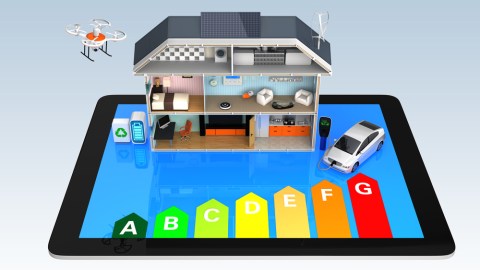How the Internet of Things & On-Demand Services Will Change Housing in Retirement

Nearly ubiquitous connectivity, the Internet of Things, and related services have produced new conveniences radically transforming transportation, food delivery, health monitoring, banking, shopping, and more. As these services become the new normal, will they transform what we believe to be living well in older age?
High-tech “smart”’ services and the on-demand economy are considered the symbols of 20- and 30-something year old Millennials. Millennials may be the first generation to view Internet-enabled convenience not just as a desired premium value, but also as an expectation for every experience. Convenience on-demand and in their hands has earned them another moniker — Gen C for Generation Convenience. However, life by app is fast becoming ageless. Only this week AARP subsidiary Life Reimagined struck a collaboration with Uber to encourage the over 40 set to consider Uber as an employment option. Airbnb, the online community and service that helps millions find accommodations in 190 countries, reports that about 1 million of its guests and hosts are over age 60.
The next wave of retirees will be more tech-savvy and more demanding than previous generations of older adults. As the Baby Boomers and Gen X (who began turning 50 this year) approach retirement, their digital midlife will lead them to assess their retirement options with the expectation that wherever they live in older age, it must be smart, connected and on-demand. Along with their Millennial children and grandchildren, many next gen retirees are redrawing Maslow’s hierarchy of needs to include the new necessities of Wi-Fi, smart technology, and on-demand sharing economy services alongside the basic human needs of food, shelter, and security.
How will these new expectations affect lifestyle and housing preferences in retirement?
Perhaps major home remodeling will include a new wave of “smart home makeovers.” People most often do big-ticket home projects in their late 40s and 50s. Beyond updating tired kitchens and bathrooms in homes bought decades ago, Baby Boomer and Gen X homeowners may seek to integrate new technologies that connect them to on-demand services making their lives more convenient today, but enabling home care services tomorrow — e.g., food delivery, telemedicine, safety monitoring.
Many retirees may downsize — moving from larger suburban homes to smaller more urbanized living in retirement. Will downsizing Boomers and Gen Xers assess their community choices through a digital lens? In a recent article on The Atlantic, I imagine what a future gerontopian age-ready community might look like. I suggest that a community’s accessibility is about more than just physical access; it includes a digital dimension as well. Older Baby Boomers and Gen Xers are likely to seek housing and communities that are easy to navigate by foot, scooter, and wheelchair, but also offer ubiquitous access to services enabled by the evolving Internet of Things and the on-demand economy.
Just imagine realtors that were once required to be fluent in discussing the quality of local schools or health care to prospective young homebuyers now having to demonstrate that a community is highly desirable because it is “smart” due to its high concentration of home technology providers and sharing-economy services. A sales pitch might sound something like this — “Yes, we have excellent health care here, but there are also a full range of telemedicine and home health providers from some of the nation’s finest hospitals … in fact, the housing development you are considering offers Mayo, Cleveland Clinic and Johns Hopkins home telehealth services.” A conversation around a community’s location and transportation might sound like: “We do have an extensive public transportation system here, but this complex is also served by Uber, Lyft, and SilverRide.ZipCar also has several hybrid stations nearby so you have no need to buy a unit with a garage. Oh, we also like to encourage walking so there is also a convenient drone-drop delivery area an easy walk from this condominium unit.”
Senior housing will have to step up to meet the new technology demands of tomorrow’s older adults. While many senior housing firms are beginning to integrate technology to improve their operations and the well-being of their residents, future buyers and family caregivers will expect technologies that can be used directly by residents. Today’s computer cafes that simply allow Internet surfing will not meet the expectations of retirees who believe that there is (or will be) an app for nearly everything.
New technology is most often discussed in terms of functionality — what “it” does. Technology also changes our thinking and perceptions of what to expect. As we are surrounded by smart everything, everywhere, throughout our youth and midlife, all of us — regardless of our generation — will expect old age to be something new.
Photo by Shutterstock





